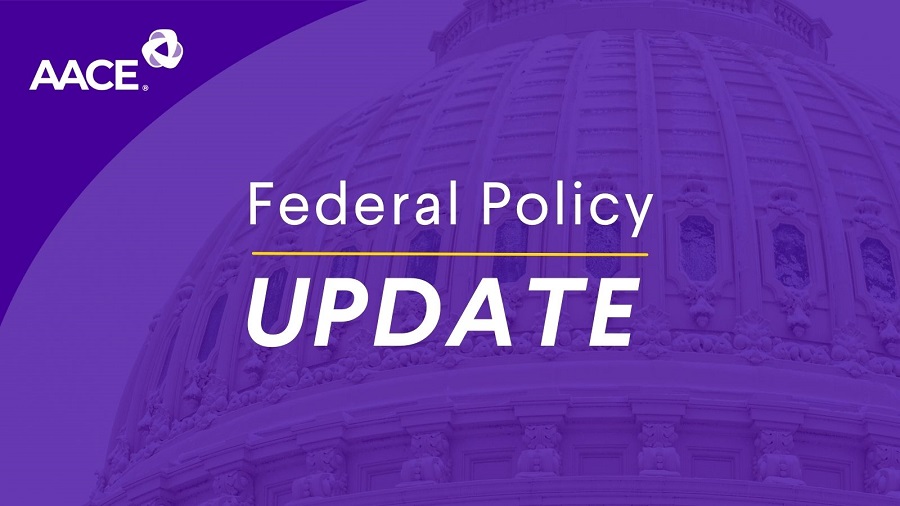
By: Julius W. Hobson, Jr.
Rules & Other Items Under OIRA Review
The following proposed rules were submitted to the Office of Information and Regulatory Affairs (OIRA) for review.
- CY 2023 Revisions to Payment Policies Under the Physician Fee Schedule and Other Revisions to Medicare Part B. The review period usually lasts about 60 days. CMS has a history of releasing the Physician Fee Schedule around the July 4th holiday (CMS: 4-20-2022).
- CY 2023 Home Health Prospective Payment System Rate Update and Home Infusion Therapy Services Payment Update (CMS: 4-26-2022).
- Clinical Laboratory Improvement Amendments of 1988 (CLIA) Fees; Histocompatibility, Personnel, and Alternative Sanctions for Certificate of Waiver Laboratories (4-20-2022).
- CY 2023 Hospital Outpatient PPS Policy Changes and Payment Rates and Ambulatory Surgical Center Payment System Policy Changes and Payment Rates (CMS: 5-4-2022).
- Conditions of Participation (CoPs) for Rural Emergency Hospitals (REHs) and Critical Access Hospital (CAH) COP Updates (CMS: 5-3-2022).
- Importation of Prescription Drugs Final Rule Questions and Answers; Small Entity Compliance Guide; Availability (FDA: 5-4-2022).
- Risk Management Plans to Mitigate the Potential for Drug Shortages; Draft Guidance for Industry; Availability; Agency Information Collection Activities; Proposed Collection; Comment Request (FDA: 5-4-2022).
Pharmacy Benefit Managers Congressional Hearing
On May 5, 2022, the Senate Committee on Commerce, Science and Transportation Subcommittee on Consumer Protection, Product Safety and Data Security held a hearing on “Ensuring Fairness and Transparency in the Market for Prescription Drugs”. The purpose of the hearing was to “examine steps Congress can take to increase transparency in drug prices, require PBMs to operate fairly, and ensure the Federal Trade Commission has the authority it needs to stop unfair practices in the prescription drug market.” PBMs have come under fire by both parties as due to belief they are responsible for high prescription drug prices.
HHS OIG Report: MA Denials of Prior Authorization Requests
On April 28th, the Department of Health and Humans Services (HHS) Office of Inspector General (OIG) released a report entitled Some Medicare Advantage Organization Denials of Prior Authorization Requests Raise Concerns About Beneficiary Access to Medically Necessary Care. Below is the summary of the OIG’s report followed by a link to the full report.
What OIG Found. Our case file reviews determined that MAOs sometimes delayed or denied Medicare Advantage beneficiaries’ access to services, even though the requests met Medicare coverage rules. MAOs also denied payments to providers for some services that met both Medicare coverage rules and MAO billing rules. Denying requests that meet Medicare coverage rules may prevent or delay beneficiaries from receiving medically necessary care and can burden providers. Although some of the denials that we reviewed were ultimately reversed by the MAOs, avoidable delays and extra steps create friction in the program and may create an administrative burden for beneficiaries, providers, and MAOs. Examples of health care services involved in denials that met Medicare coverage rules included advanced imaging services (e.g., MRIs) and stays in post-acute facilities (e.g., inpatient rehabilitation facilities).
Prior authorization requests. We found that among the prior authorization requests that MAOs denied, 13 percent met Medicare coverage rules—in other words, these services likely would have been approved for these beneficiaries under original Medicare (also known as Medicare fee-for-service). We identified two common causes of these denials. First, MAOs used clinical criteria that are not contained in Medicare coverage rules (e.g., requiring an x-ray before approving more advanced imaging), which led them to deny requests for services that our physician reviewers determined were medically necessary. Although our review determined that the requests in these cases did meet Medicare coverage rules, CMS guidance is not sufficiently detailed to determine whether MAOs may deny authorization based on internal MAO clinical criteria that go beyond Medicare coverage rules. https://oig.hhs.gov/oei/reports/OEI-09-18-00260.pdf
No Surprise Billing Update
The U.S. Department of Justice has notified the Fifth Circuit Court of Appeals of its intention to appeal a federal court ruling on the surprise billing ban that sided with providers by saying the Biden Administration's rule conflicts with the No Surprises Act passed by Congress. This has been expected prior to the final rule's release. Health care providers filed suit concerning the regulation because they said HHS' interpretation of the law unfairly favored insurers during negotiations over payment disputes.
The Justice Department appeal prompted the American College of Emergency Physicians, American College of Radiology and American Society of Anesthesiologists to announce they would move forward with their separate case. That case was filed in a district court in Illinois but had been stayed since March.
Several other stakeholders also had filed suit, including the American Medical Association and the American Hospital Association. This case was heard in the U.S. District Court for the District of Columbia in March. Meanwhile, the administration still plans to move forward with the final rule based on public comments received concerning the interim final rule and that the rule would be out by summer.
Additional COVID-19 Funding Update
The Senate has yet to bring the proposed $10 billion additional appropriations for the COVID-19 response. There has been no resolution on Republican desires to add an amendment preventing the Biden Administration from relaxing Title 42 with regard to immigration along the southern border.
Employment Situation
On May 6, 2022, the Department of Labor’s Bureau of Labor Statistics released “The Employment Situation—April 2022” report. Nonfarm payroll employment increased by 428,000 and the unemployment rate was unchanged at 3.6 percent. Labor force participation remained unchanged at 62.2 percent. Health care employment rose by 34,000 in April, reflecting a gain in ambulatory health care services (+28,000). Employment in physician offices was up 9.8 percent. Overall, employment in health care is down by 250,000, or 1.5 percent, since February 2020.
